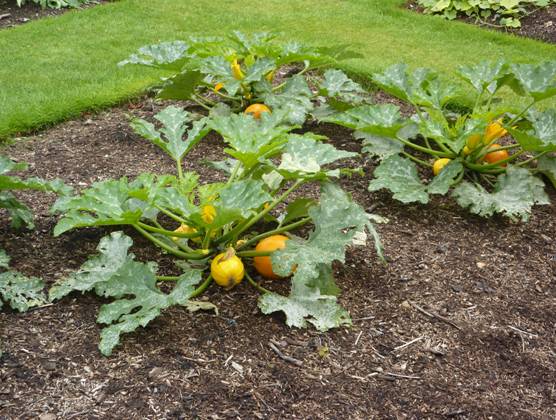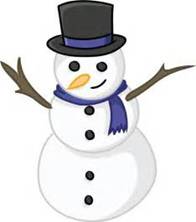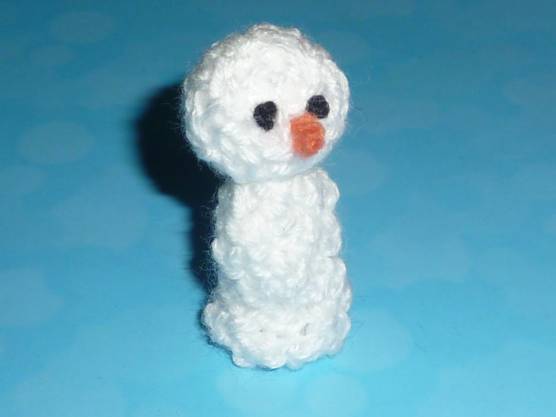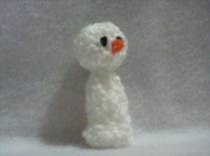
Salty Sam’s Fun Blog for Children
Number 296
Rain
Hello Everyone

Well, we have had some rainy weather this week in Rocky Bay and it has been lashing against my windows so loudly l could hardly hear myself think.
Do you know the difference between the meaning of weather and climate?
lf you don’t know, l will tell you.
Weather is what we have in one day or over a few days and climate is the kind of weather an area generally has over time through different seasons.
An area of the world could have a cold or wet or warm or hot climate for example.
The Sun has the biggest effect on our weather. Sometimes exploding volcanoes can have an effect on the weather too as they spew volcanic ash into the atmosphere.
Life on Earth needs sunshine and rain. Did you know that all the water caught up in our weather system is recycled? lt goes round and round from place to place.
Rain comes from clouds.
Clouds form when water rises up from seas and lakes in the warmth of the Sun.
This is called evaporation. This water condenses in the cooler upper atmosphere and becomes clouds. Clouds keep the Earth warm at night especially in winter.
Warm air rises and takes water droplets with it. lt cools in the higher regions where it forms clouds. They look light and fluffy but are actually very heavy and these millions of tonnes of water that the clouds hold will clump together to form raindrops. When they are too heavy to remain in the cloud they fall as rain.
Rain falls on land and sea. lf it soaks into land, it will be drunk by plants or run into rivers where it runs back into lakes and seas.
Have you noticed that when a shower of rain hits the earth after a long spell of dry weather there is a very particular smell in the air?
This smell is called petrichor. lt is pronounced petricore.
The smell is of plant oils and chemicals of soil bacteria that are released into the atmosphere when the rain water hits the dry earth.
This rich, green smell is so loved by some people that it has been bottled as a perfume!
Plants need water and animals need water.
Plants always start as a seed. They may seem dry and even dead-looking but they have all the information contained inside them that will tell them what to grow into when they are given a wake-up call to grow.
This trigger to set them off growing could be the light and warmth of spring weather or a shower of rain. We often water plants and seeds the minute we plant them to help them settle into their new home – that is to say a flower bed or seed tray to help them grow.
ln nature, it is the rain that waters plants. Without water, plants cannot survive.
But rain can be quite destructive too. So some flowers like dandelions and daisies will close themselves up to protect themselves from heavy rain.
A seed sends down roots to search for water and minerals in the soil. These will nourish the plant. Shoots come up from the seed and grow upwards towards the light of the Sun.
Large trees suck water up through their trunks even up to the highest leaves. The largest of trees move water through all of their cells to every part of the tree that needs it – maybe even taking up up to 400 litres a day. Large trees can only grow where there is enough water to sustain them.
Some of the hottest regions on Earth are also the driest; like parts of the Atacama Desert in Chile where it has not rained since records began.
ln deserts where water is scarce, plants have adapted many ways to preserve water. Cacti have spongy insides to hold water when it is available and stores it through the times it is not. They have spines instead of leaves. The spines have a thick covering that holds water inside.
Other places have almost constant rain. Mount Waialeale in Hawaii has only about 11 days a year without rain. Areas like this learn to cope with lots of rain but in other areas, large amounts of torrential rainfall in a short time can become dangerous flood water and will wash property away.
Rainfall is good. Too much rainfall can be bad. Heavy rain can knock some insects like butterflies off the wing and they will try to hide under a leaf or flower when they feel the drops falling.
Ancient Egypt relied on the flooding of the Nile to soak the surrounding land and make it ready to grow crops.
Asia relies on monsoons to bring rain to hot arid land.
But heavy downpours can cause flooding and landslides. These natural disasters cause more death than any other.
When the atmosphere is very cold, rain can freeze and fall as snowflakes, if water falls as ice, it is called hail. Hail can be very destructive. Hail can put dents in cars and pulverise crops. ln 1888, nearly 250 people died in a hail storm in lndia.
Large hail stones can fall at 100mph. They can quite often be the size of golf balls but can be up to 20cm across!
Thunderstorms can also be very destructive. lnside a thundercloud, ice particles and droplets move around and collide. This builds up energy and creates electrical charges. This is released as light, sound and heat. We experience this as lightning and thunder. The energy produced by thunder storms can be equal to an atom bomb, but most of the energy is released into the atmosphere.
A lightning bolt can be 1 million volts and 5 times hotter than the surface of the Sun. There are 8-9 million lightning strikes hitting Earth every day.
Where there is low rainfall, people can collect drinking water from the air by using fog nets. These nets collect water that is found in the air which then drips off the bottom of the net and is stored for use.
There is always water in the air, even in deserts. Warm air can hold more water than cold air. We can’t see it unless the water condenses into droplets and forms fog. This happens when the air cools. The droplets need to condense onto something like a hard surface or particles in the air. A lot of pollution can attract fog.
ln a rainforest, you can very easily see how rain is part of a circle of evaporation and condensation.
Rainforests are found in tropical regions and have large amounts of rainfall. The Hawaiian rainforest has the highest rainfall at over 10m per year.
lt rains every day in the rainforest. The rainforest has its own microclimate. This water is recycled every day through evaporation from the top canopy in the morning when clouds form just above the forest. These clouds release their moisture as rain every afternoon.
Some of the plants in the forest like bromeliads grow their leaves in a circular pattern in order to create cups which trap the rain and store it in pools. Some little animals, like frogs, use these pools to live in.
Plants in every region on Earth adapt themselves to the levels of rainfall they are likely to receive over the year.
lf you want to predict whether rain is on the way, the easiest way to do this is to look at the clouds.
The darker the bottom of the cloud the more likely it is about to rain.
There are basically three different types of cloud that you will see in the sky every day. The clouds show you the mood of the atmosphere.
They are called stratus (which is Latin for layer) cumulus (which is Latin for heap/pile), and cirrus (which is Latin for a lock of hair).
Stratus clouds are an indication of rain and the other two indicate fine weather.
So watch out for the cloud type above you in the sky and become your own weather forecaster!
Bye bye everyone – don’t forget to subscribe to my blog!
lf you like my blog, please support it by telling all your friends and followers about it.
Thank you!
And see you again next Fun Friday!
Love and kisses
Salty Sam

www.christina-sinclair.com


Bill and Bob’s Joke of the Week![]()
![]()
Bob: Do you know why it can never rain for two days in a row?
Bill: No l don’t. Why can’t it rain for two days in a row?
Bob: Because there is always a night in between.

Salty Sam © Christina Sinclair 2015
Unauthorized use and/or duplication of material from this blog without express and written permission from this blog’s author and owner is strictly prohibited.
Links may be used to www.christina-sinclair.com

Picture Gallery
 Thunder clouds over the sea
Thunder clouds over the sea
 Stratus rain clouds
Stratus rain clouds
 Hail stones
Hail stones
 A fog net
A fog net
(designboom.com)
 Crops need rain to help them grow
Crops need rain to help them grow
 1939 – British soldier takes tea to comrades working to repair banks
1939 – British soldier takes tea to comrades working to repair banks
of River Ravensbourne which flooded South London.


 THE SALTY SAM NEWS DESK
THE SALTY SAM NEWS DESK

It is really easy to make your own rain gauge.
Here is how you do it…

All you have to do is mark increments on the outside of a jar with a pen that will not wash off in the rain.
Put a line at every centimetre or inch and number the lines.
Put the jar in a place where it will not get kicked over or blown over in the wind.
Don’t leave it where the Sun will evaporate the water you have collected either.

lf you want to measure the rainfall you have in one day, you can empty the pot out before taking another measurement, but don’t do this if you want to measure how much rain falls over a few days together – and you want to add all your findings together.
The jar must be the same width all the way up.
Don’t use a bottle with a narrow neck.
Don’t of course leave the lid on either.


*********************
TO ADVERTISE ON THIS BLOG
PLEASE CONTACT:
christina.sinclair.ads@aol.co.uk
*********************


Quick Quiz
Can you un-jumble these words to find some words that relate to the rain?
- bligotonnolstew
- leddups
- nithasmock
- wonarib
- donicralu
- narropid
- shormtedrunt




lt’s the Weekend!

HOW TO MAKE A SNOWMAN FlNGER PUPPET
This snowman is very cute. If the pattern looks too difficult for you, make him in garter stitch; that means just knit every row, but you might want to add two of four rows to make him long enough for your finger.
The pattern used here gives him a lovely crusty, icy appearance.

SNOWMAN FINGER PUPPET (KNIT ONE)
Using 4mm knitting needles and white dk yarn cast on 11 stitches
Knit 1 (knit 1, purl 1) repeat the last 2 stitches to the end of the row
Knit 1 (purl 1, knit 1) repeat the last 2 stitches to the end of the row
Slip 1 (purl 1, knit 1) repeat the last 2 stitches to the end of the row
Slip 1 (knit 1, purl 1) repeat the last 2 stitches to the end of the row
Slip 1 (knit 1, purl 1) repeat the last 2 stitches to the end of the row
Slip 1 (purl 1, knit 1) repeat the last 2 stitches to the end of the row
Slip 1 (purl 1, knit 1) repeat the last 2 stitches to the end of the row
Slip 1 (knit 1, purl 1) repeat the last 2 stitches to the end of the row
Repeat the last 4 rows until you have knitted 22 rows but knit 24 rows if you have very long fingers
Don’t cast off but instead thread about 20 cm of yarn through these stitches and pull them in to make a round top to the snowman’s head after you have embroidered a face onto the top of the front of your knitting.

Wrap the black yarn twice around your yarn needle and make French knots to create coal eyes then wrap some orange yarn three times around your yarn needles to make a French knot carrot nose, or just make a little loop to make a pointy nose.
You can sew little buttons down his front as well if you would like to.
With right sides together over-sew down the back of the snowman.
Turn him the right way out, stuff his head and bind some white yarn tightly around his neck twice.
SCARF (KNIT ONE)
Using 4mm knitting needles and blue dk yarn cast on 30 stitches
Cast off and neaten ends by sewing them into the ends of the scarf with a yarn needle

Please note that the material on this blog is for personal use and for use in classrooms only.
It is a copyright infringement and, therefore, illegal under international law to sell items made with these patterns.
Use of the toys and projects is at your own risk.
©Christina Sinclair Designs 2015


Quick Quiz Answers
- Wellington boots
- Puddles
- Mackintosh
- Rainbow
- Raincloud
- Raindrop
- Thunderstorm



For an Embroidery Stitches Chart
Check out Blog Post 3

